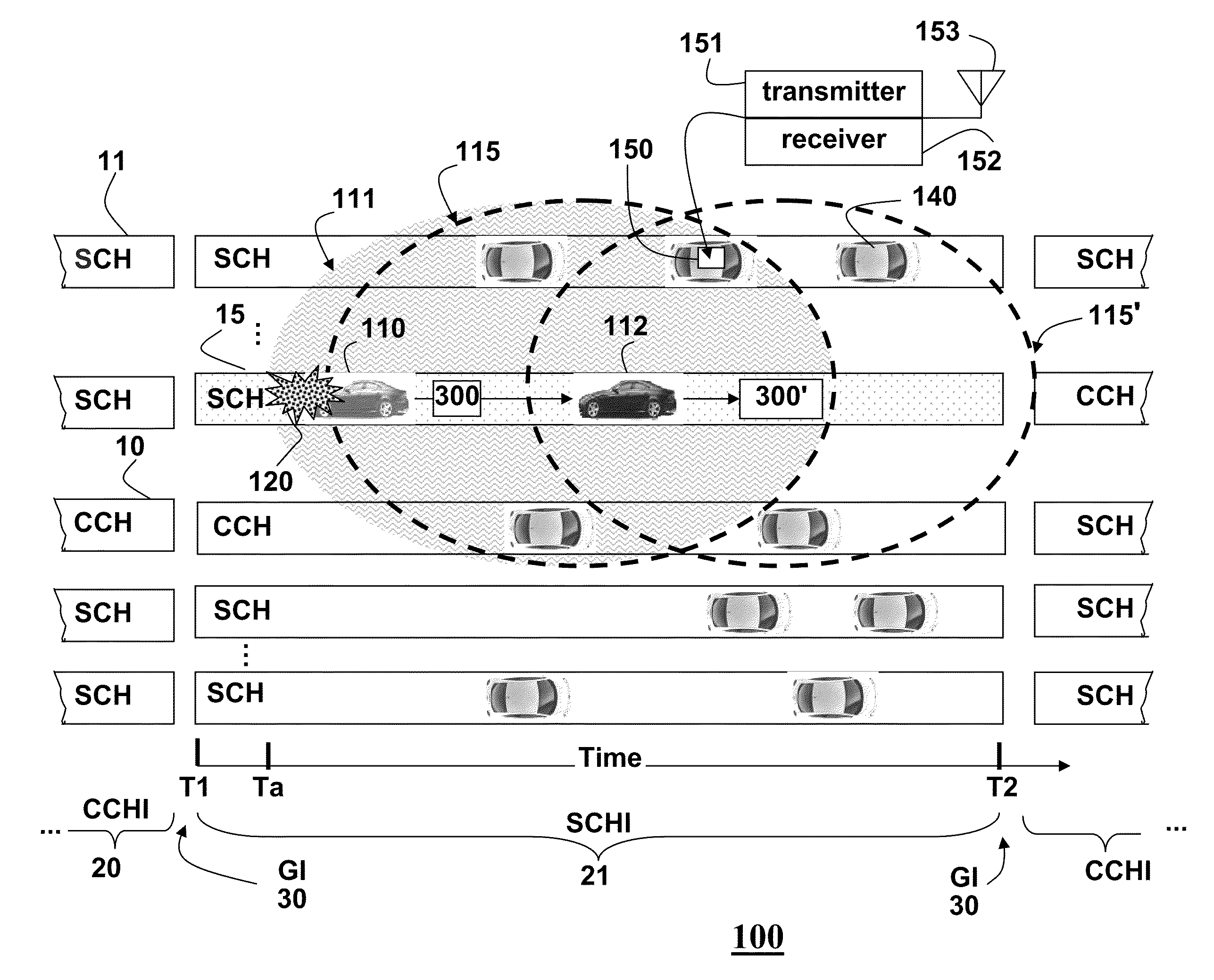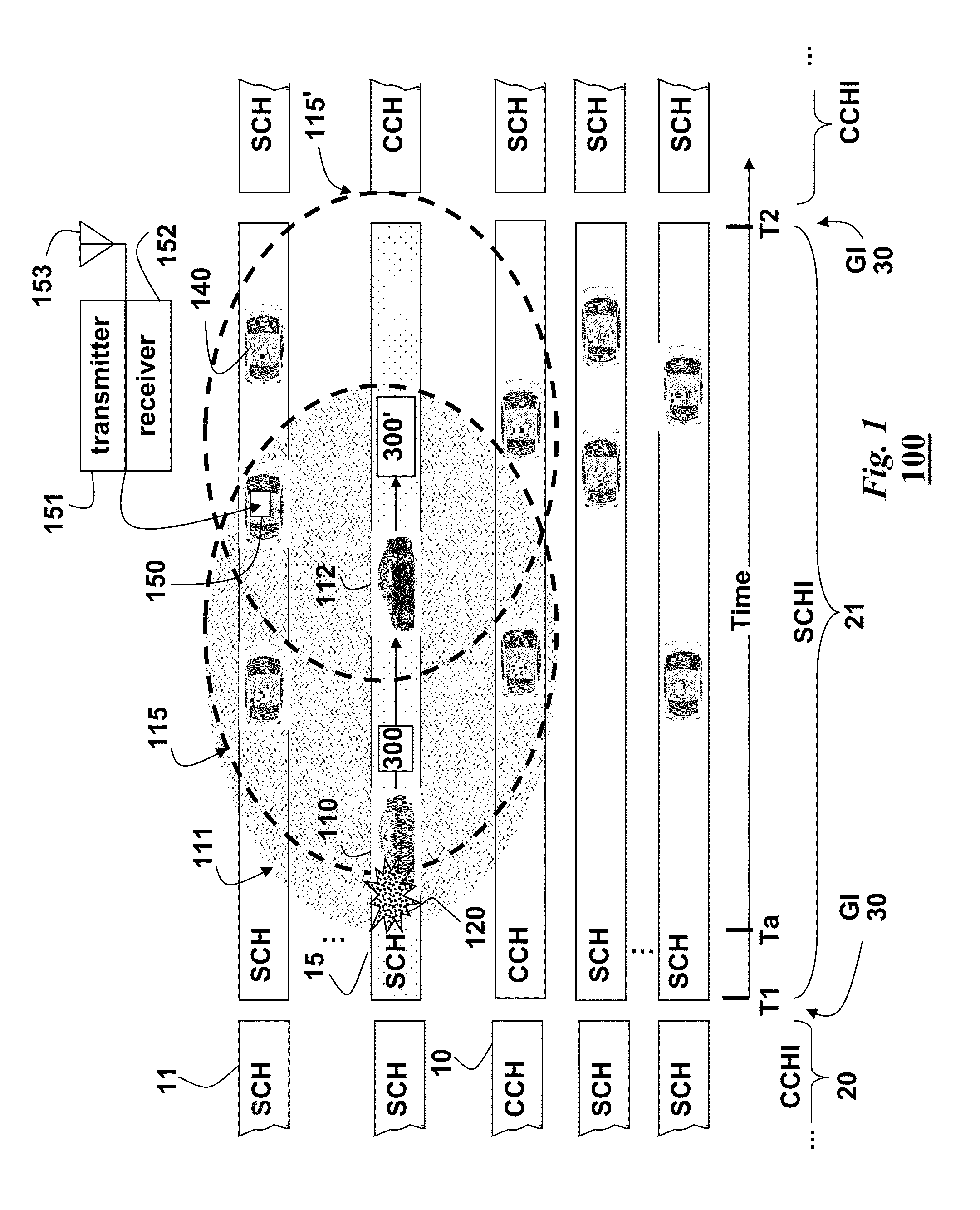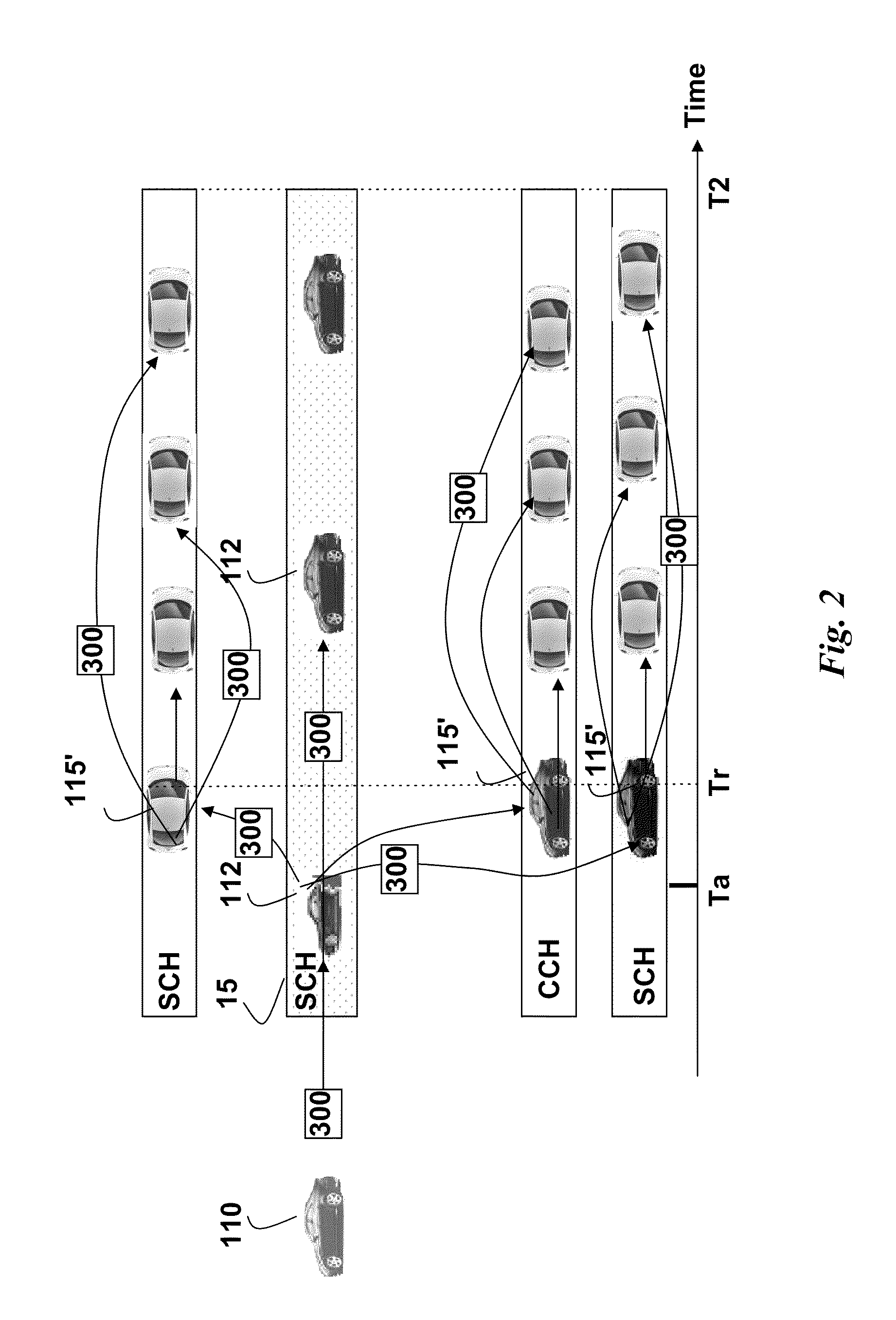Broadcasting Messages in Multi-Channel Vehicular Networks
a vehicular network and multi-channel technology, applied in the field of wireless communication networks, can solve the problems of 54 milliseconds or greater latency, more difficult to reliably broadcast high-priority messages, and inability to meet the latency requirements of the sae, so as to increase coverage and reduce latency
- Summary
- Abstract
- Description
- Claims
- Application Information
AI Technical Summary
Benefits of technology
Problems solved by technology
Method used
Image
Examples
Embodiment Construction
[0023]FIGS. 1-2 shows a multi-channel vehicular ad-hoc network (VANET) 100 used by embodiments of the invention. Each vehicle 140 operating in the VANET includes a transceiver 150, i.e., a transmitter 151 and a receiver 152 connected to one or more antennas 152. The transceivers operate in half-duplex mode. Hereinafter, a node refers to a combination of the vehicle and the associated transceiver.
[0024]Bandwidth in the network is partitioned into a single control channel (CCH) 10, and multiple service channels (SCH) 11. The CCH is used for high priority messages during the control channel interval (CCHI) 20, and is used for low priority messages during a service channel interval (SCHI) 21. The SCHs are used for service messages during the control channel interval (CCHI) 20, and are used for safety and service messages during a service channel interval (SCHI) 21. The CCHI and SCHI are separated by guard intervals (GI) 22. The invention is particularly concerned with communications on ...
PUM
 Login to View More
Login to View More Abstract
Description
Claims
Application Information
 Login to View More
Login to View More - R&D
- Intellectual Property
- Life Sciences
- Materials
- Tech Scout
- Unparalleled Data Quality
- Higher Quality Content
- 60% Fewer Hallucinations
Browse by: Latest US Patents, China's latest patents, Technical Efficacy Thesaurus, Application Domain, Technology Topic, Popular Technical Reports.
© 2025 PatSnap. All rights reserved.Legal|Privacy policy|Modern Slavery Act Transparency Statement|Sitemap|About US| Contact US: help@patsnap.com



